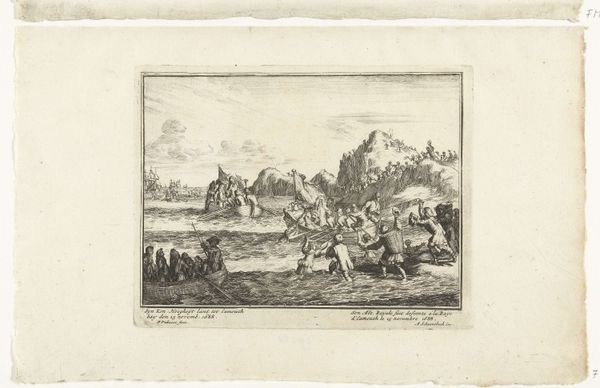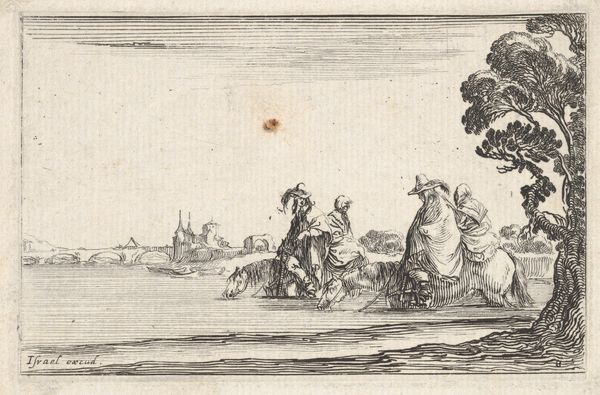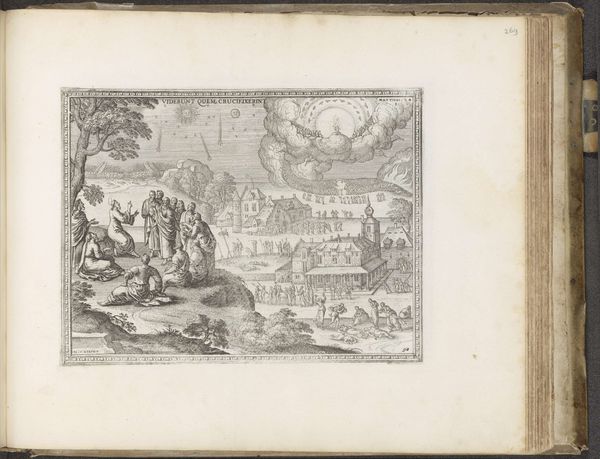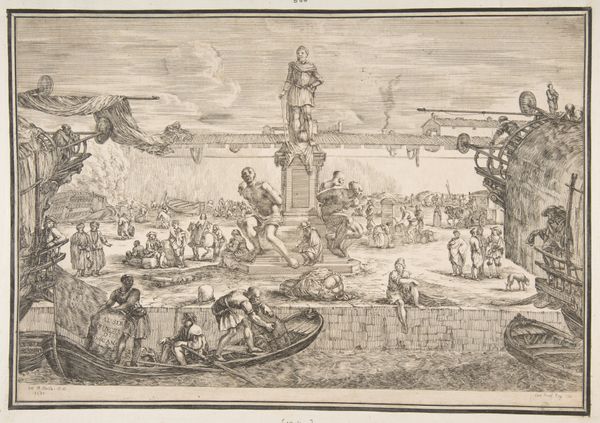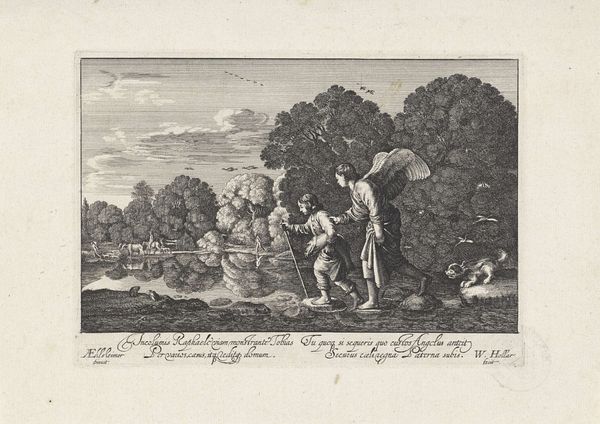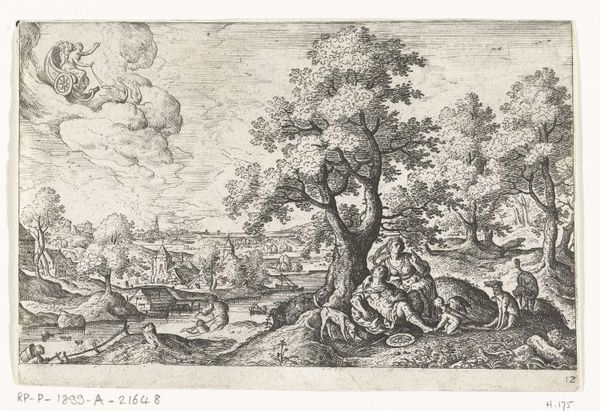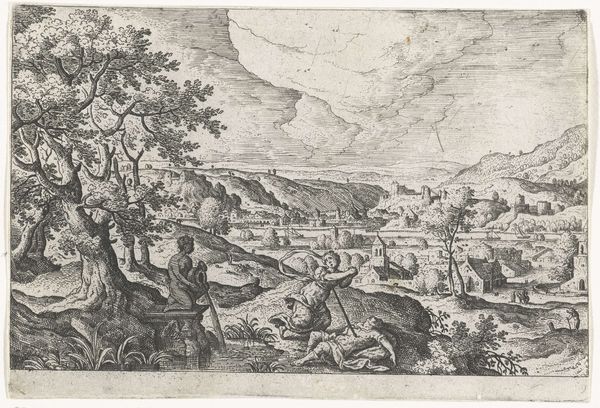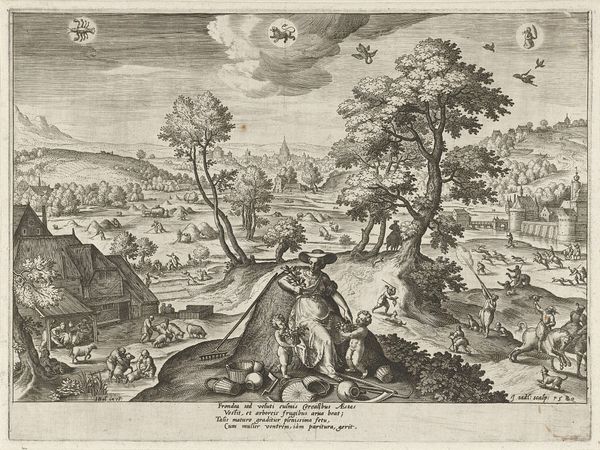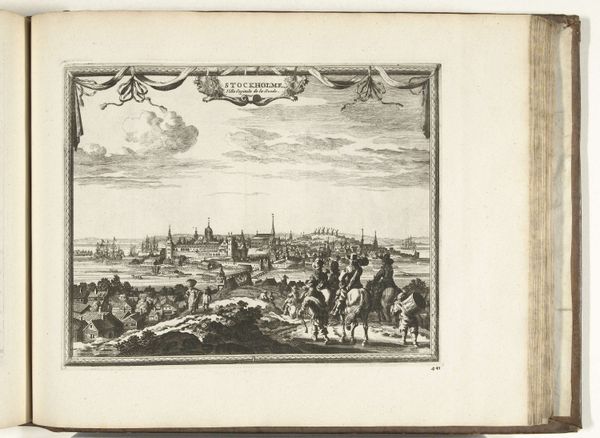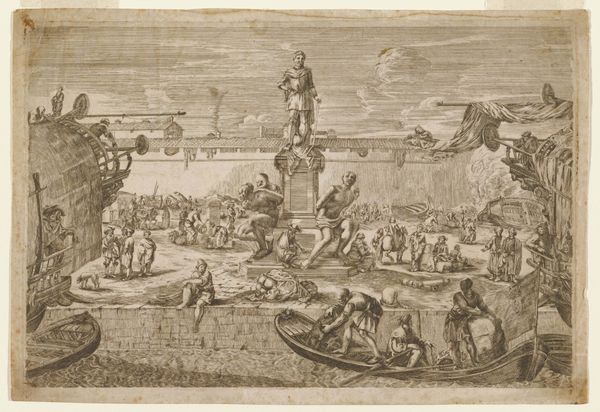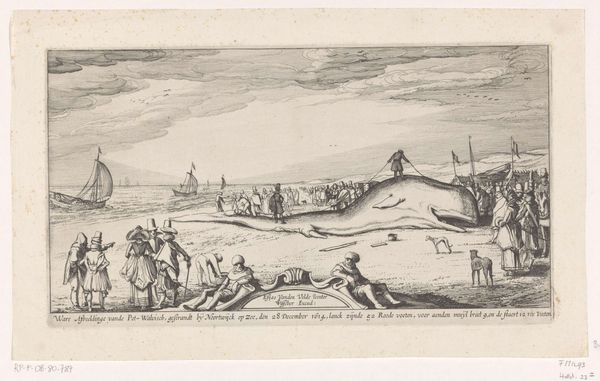
print, engraving
#
baroque
# print
#
landscape
#
figuration
#
genre-painting
#
engraving
Dimensions: height 192 mm, width 288 mm
Copyright: Rijks Museum: Open Domain
Elias Baeck created this print of a landscape with dancing peasants sometime between 1679 and 1747, using etching techniques. The scene speaks to notions of rural life during the period. The image constructs its meaning by contrasting the leisure of music and dance with the realities of agrarian life. The peasants dancing to the bagpipes suggest a self-sufficient, joyous community. But this image was produced in the Holy Roman Empire, a place with strict social hierarchies and economic inequalities. It raises the question, is this a realistic depiction or an idealized one? To understand this, we can delve into sources from the period: literature describing peasant life, economic records detailing agricultural production, and even music from the era. By examining these historical resources, we can better understand the complex relationship between art and social reality.
Comments
No comments
Be the first to comment and join the conversation on the ultimate creative platform.
